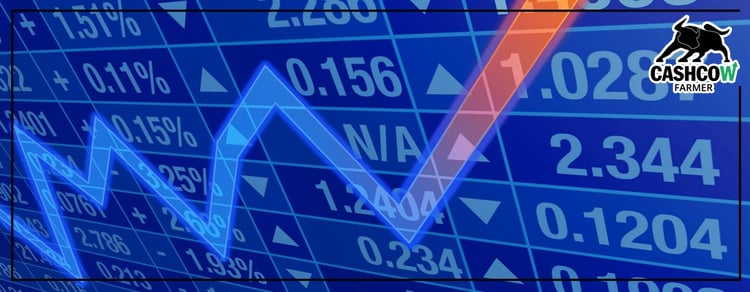
We’ve been talking about building a grain marketing plan these last few weeks. So far, we’ve covered the need to quantify your grain and to handle logistics
Today, we’re going to talk about all the tools at the disposal of the grain marketer, starting with the most familiar and moving to the less familiar.
Forward Contracts
The most familiar contract that a farmer has is their forward contract with the elevator. They call the elevator and say, express an interest to sell grain. The elevator will ask, “Do you want to set the basis or do a hedge-to-arrive?”
You probably know the difference between those two, but let’s do a quick recap. Hedge-to-Arrive
A hedge-to-arrive (HTA) is a futures fixed contract, in which you lock in the futures price and leave the basis open. You do HTAs after market rallies. Traditionally, when the market rallies, elevators and co-ops raise the basis because they know that sales are coming. Rallies are easy for the coop to snatch a few extra cents with the basis. It’s just part of the game.
They actually make the most money during the rallies. Soybeans, for example, were up over a dollar in the last month, and the basis has gone up 20-30¢.
Basis Contracts
When you have rallies, you want to use hedge-to-arrive contracts. But when things are bad—really bad—you’ll have pretty good basises. In that case, lock them in with basis contracts.
If you’re good at the basis side of things, you can easily pick up another 20-30¢ out of the grain markets for all your commodities, especially if you’ve got some storage space.
Futures Contracts

Here’s where things get a little more ambiguous.
Farmers tend to have less knowledge about futures contracts, but they’re a lot like stocks. If you buy a contract, you’re hoping it goes up; if you sell, you’re hoping it goes down.
If you’re wrong, you’ll notice as your money goes up and down in your account. And it moves fast—very fast. If you had 100% of your money in one futures position, a 5% dip would wipe you out. Leverage is about 20 to 1 in the futures markets so tread lightly. Some amature farmers can end up doubling their losses by not understanding the futures markets or going all in right away. Dip your toe to make sure the water is right before you swan dive in.
Still, futures are extremely valuable. Here’s how you should handle them:
Do up to your insurance guarantee in cash contracts. Then, for the rest, do futures contracts, whether that’s futures or options, which leads me to the next tool.
Options
Options are a little bit different. They trade on the futures, but when we have huge rallies in the market, options become very expensive because there’s a time and volatility premium.
You pay the premium, like little insurance policies. You can buy them when they’re cheap, and when they’re really expensive, you can sell them and close your hedge.
For those of you with grain in the bin, one hedging strategy is shorting the futures market on what you’re stored, especially if you’re bearish (you think it’s going down).
If you short the futures market and it goes down, you’re going to make money in your margin account. But your grain will lose value, so your net gain is zero. Remember, we are managing price risk here, not speculating.
If it goes up, you’re going to gain money in your grain value, but lose it in your margin account. So why use this strategy? Because you don’t want to lose money and you’re trying to capture basis movement with stored grain not make up for marketing misakes. Make sure you have a specific goal: are you trying to capture price? What are you trying to do?
Lost yet? I know this is complex stuff, but hear this: if you’re a farmer just getting into futures, do one contract, the bare minimum, just so you can see and understand exactly how everything moves and what that looks like. Using farm management software can be a great solution and we have you covered there. Check out our risk free trial.
This is also something we help with in our Grain Marketing Advisory. We’re totally hands-on, and we want to make sure you’re ready for every opportunity. We work with the best grain marketing advisor in the U.S. in my opinion, Randy Martinson, formerly of Progressive Ag.
We’re happy to be working with him. But we’ll get into advisory more next week!
Currencies

Two other tools are involved here, which not many people think about. The first is currency.
The United States dollar has a big impact on the price that we get for our grain and how much we’re able to export. As the U.S. dollar gains strength versus other world currencies, especially the Chinese yuan, our commodities become more expensive.
Think: if Brazil’s selling corn for $2.50 a bushel and we’re selling it for $3.50 a bushel after you convert the currency, where are people going to buy their corn?
If our exports go down, our price will go down. If our grain is too expensive, we have to lower the price. Otherwise, nobody buys it.
You have to come down to where the market is on a global basis.
Correlated commodities
Corn has become an energy commodity, meaning oil and corn trade closely sometimes. Their trading is correlated. As the price of oil goes up, ethanol becomes more valuable, and we start to use more corn for ethanol. Roughly 45% of the 2015 corn crop was distilled into ethanol. That translates into a big local buyer for corn.
So we’ve got to be watching the energies if we want to stay on trend with the futures market.
Conclusion
This stuff can get confusing, especially for a busy farmer. We talk to farmers all the time, so we know this is a challenge. Whether you’re a customer or not, call us with questions and we’ll try to give you the best information.
We’ll be more than happy to help you navigate these markets.
Call or email us anytime. We offer complimentary grain marketing strategy sessions to our friends who read our articles.





